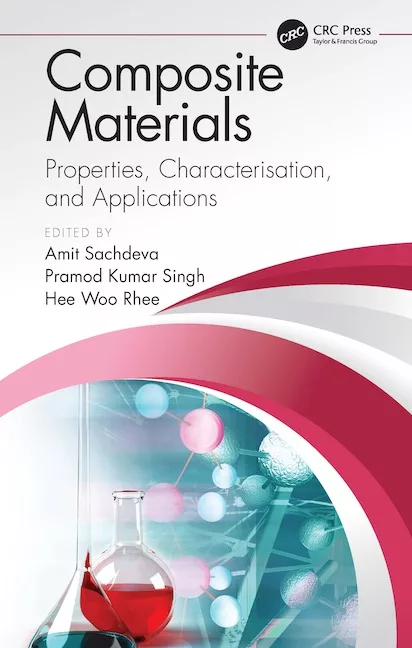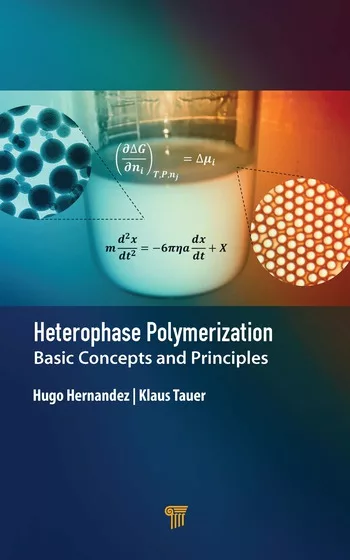Glass Flake
Extraordinary Performance Improver
Glass flake, first produced commercially around 60 years ago, has been used for a number of years to reduce gas and moisture vapor diffusion through coating films. However, advances in glass flake production have allowed thinner and more consistent flakes to be produced, and this has led to investigative work into the properties that can be attained using glass flake reinforcement.
Glass flake looks like microscopic pieces of broken window pane. The high aspect ratio of flakes, compared to fibers or granular fillers, imparts unique properties to materials to which they are added. Care has to be taken in choosing the addition level and size distribution to obtain the required result and for the optimization of a particular characteristic.
Originally glass flakes were produced with a mean thickness of around 8 microns, but Glassflake Ltd. pioneered a new production process in the early 80s allowing flakes to be produced at much lower thicknesses. These are now being produced from 7 microns down to an incredible 100 nanometers, with the bulk of flake used in the paint industry being from 7 to 3 microns.
Areas of interest where the addition of glass flake can make significant improvements include: fire retardancy, moisture vapor or gas permeation reduction, mechanical reinforcement, viscosity and thixotropic changes, abrasion resistance, dimensional stability and UV light resistance. Improved properties can be achieved in most coating resins but glass flake has been used predominantly in thermoset materials such as unsaturated polyesters and epoxies. Interestingly, the benefits also extend into materials such as polypropylene, PTFE, paper and cement. As always there are benefits and pitfalls in using glass flakes, and some of these, along with some areas of potential use, are presented here.
Properties Affected by Glass Flake
A variety of coating properties are affected by the addition of glass flake to a formulation. These include:
- Vapor and gas permeation/diffusion;
- Chemical resistance;
- UV light resistance;
- Mechanical properties – tensile, compressive strength, flexural modulus, etc.;
- Abrasion resistance;
- Shrinkage – in mold (thermoplastics) on polymerization (thermosets);
- Dimensional stability e.g., creep resistance, warp and sag;
- Impact resistance;
- Dielectric strength and electrical resistivity;
- Fire resistance and smoke emissions, sag resistance in combustion;
- Heat distortion temperature;
- Chemical reaction.
Except for coatings for component parts, most coatings are based on organic resins. However, all organic coatings will, to some extent or another, convey or absorb moisture vapor and gases. Preventing or resisting this is desirable to extend corrosion protection, and it is in this area that glass flakes initially found their niche. They were later used to improve other areas of interest.
The benefits of using plate-like barrier pigments, such as mica and micaceous iron oxide, in anti-corrosive coatings to reduce moisture vapor transmission have been known for a substantial number of years. Other barrier pigments such as aluminum and zinc flakes have also been used as combination anodic and barrier fillers with varying degrees of success. Glass flakes have gained popularity for several reasons. They have a large aspect ratio and, unlike mica, are totally impervious to moisture vapor and are consistent in composition. Other barrier pigments commonly used are opaque and often strongly colored; micaceous iron oxide in particular makes coatings difficult to tint in light shades, while glass flake is clear. In addition, glass flake manufactured from ‘C’ or ECR glass is highly chemical resistant and inert in most environments, has good mechanical properties and is generally considered a simple dust hazard or non-hazardous, particularly when compared with small fibers and some other pigments.
Unfortunately the effects of using different concentrations of flake, flake aspect ratios, particle size distribution, and the unusual effects on viscosity and critical pigment volume concentration are rarely understood. There is also relatively poor understanding of how the glass bonds within the various resin matrices, and although glass flake is impervious to moisture vapor and gas diffusion it does not present a continuous barrier in a resin matrix. The resin carrier, therefore, plays a very important role, i.e., glass flake cannot make a poor resin film into an excellent coating, although it may substantially improve it. On the other hand, even excellent resins can benefit from the addition of flake. Flake also offers differing aspects to mechanical reinforcement and fire resistance than those attained by adding fiber or other fillers.
Important Considerations When Using Glass Flake
Many different types of coating resin are used with glass flakes, including polyesters, epoxies, chlor-rubbers, alkyds, coal tars, vinyls and water-based acrylics. Although the addition of flake will generally improve the moisture vapor transmission resistance of almost any coating film or membrane, there may be other benefits with new properties being imparted or old ones improved. The level at which the glass flake should be added, the particle size distribution and adhesion to the carrier is of paramount importance.
Although glass flakes with aspect ratios as low as 10:1 will provide benefits, generally the higher the aspect ratio the better the barrier presented. This premise has to be tempered to some extent, however, as out-of-alignment, large-aspect-ratio flakes can afford a direct path through the film where the film is less thick than the nominal diameter of the flake, or cause stress raisers for crack propagation. In addition, there are some properties that may be adversely affected when using large flakes, such as flexibility and elongation-to-break. It is also important to consider the practicality of using large flakes; i.e., when a coating is sprayed, the gun tip size is limited by several factors and the flake will have to be small enough to pass through the spray tip. It is, therefore, common that flakes of around 250 µm and below are used for spray application, and flakes above this size (as large as 1,000 µm) are used for hand-applied materials. Large flakes also tend to produce rough surface finishes.
Flake size and thickness are only one of the issues involved in obtaining performance. The quantity of glass flake added and particle distribution is also critical. It is obvious that if thin flakes of glass are used there are many more flakes for the same weight than if thick ones are used. Therefore, the surface area to be wetted with the thin flakes is vastly greater. This means that it is impossible to just simply state the requirement for an amount of flake. It may be possible to add 20% by weight of flake at a thickness of 5 µm and not exceed the critical pigment volume concentration to resin ratio (CPVC). But if the same quantity of flake at 2 µm thickness were added, the surface area of this flake would be at least two and a half times that of the thicker flake, and there may be insufficient resin for wet-out, thus exceeding the CPVC level. In any case, the viscosity increase may be so high when changing from thick flake to thin flake that addition at the same level becomes impossible. As with any formulation, minor modifications can render significant changes. This is especially so with glass flake, and it is necessary to carry out a full evaluation.
It is obvious from the preceding statements that once a thickness of flake has been chosen it is important to optimize particle size and addition level. That level will depend upon the type of resin being used and what other pigments or fillers are being used in conjunction with it.
Adhesion to the substrate plays a substantial role in the performance of organic materials in corrosion protection. Equally important is the bonding of fillers into the resin to obtain performance both from a corrosion resistance point of view and in mechanical performance. Silanes have been used for many years in the glass fiber industry to improve bonding and performance. This improvement in performance is often seen both as an increase in some of the mechanical properties and a decrease in moisture vapor transmission. In thermoset resins it is possible to get substantial performance improvements simply by adding the silane chosen to the resin component either just before or just after the glass flake is added. With thermoplastic materials, however, this is generally not possible, and the glass flake has to be pre-treated with silane. It is noticeable that pre-treated flake will often improve the bonding performance not only in thermoplastics but also in thermosets and to a higher level than that achievable by adding the silane indirectly via the resin.
Where the silane is added to the resin, it is normal to observe that there is a critical level, and the optimization peak is often very steep. This is true for each particular resin, glass thickness, particle distribution and addition level. It should also be noted that other fillers or additives, such as thixotropic agents, will affect the optimization level. When the silane is added by pre-treating the glass, the level of silane used is not so critical, provided that saturation of the flake causing agglomeration is not achieved. It is also observed that with pre-treated glass a much higher level of glass flake can be added to the resin (in particular to the thermosets) without exceeding the CPVC level. One disadvantage of using pre-treated flake however, is the cost and change in safety hazard classification of the flake.
With modern production methods, glass flake can be produced at a consistent thickness, which may be varied for different purposes from around 10 µm thickness to as low as 100 nanometres, and almost limitless particle size distributions are possible. The effects of thickness, particle size, volume concentration etc., were not well understood until a substantial amount of work was carried out by Glassflake’s sister company Corrocoat, which initially evaluated glass flake coating formulations using flakes of differing thickness and diameters and with differing particle distributions. Some of the results were surprising and others were expected, and because testing was carried out over a wide range of properties and not just diffusion and corrosion resistance, some interesting parameters were discovered. Of particular interest was the amount of fire resistance provided in some materials when using glass flake, including the reduction in smoke emission, shrinkage rate, heat distortion and creep. These results led to work on non-coating applications and engineering thermoplastics. An example of some of the coating work is shown in the following section.
Varying Flake Concentration
Tests were carried out to evaluate the change in moisture vapor transmission afforded by varying the flake concentration. A vinyl ester resin was used as the carrier resin, with the only difference in the materials tested being the addition level of glass flake. Tests were conducted initially to zero in on the area of criticality, then levels of 14%, 15% and 16% were used to carry out the main evaluation.
As can be seen from the results in Table 1, the quantity versus permeation curve is very steep, with a 1% change in the addition level changing the permeation rate from 10.61 to 3.46. A further addition of glass changes the permeation rate for the worse but only marginally with further additions (not shown here), showing a progressive worsening as the CPVC level is approached and exceeded.
Cathodic disbondment testing is a short, (28 days), but very effective test that evaluates electrical resistivity, moisture content, adhesion to the substrate and alkali resistance. Each of the four aspects, if adverse, will affect the end result. Variations in glass loadings were evaluated in the same resin matrix as those above, and the results shown in Table 2.
The results, as expected, show a similar pattern to that of the moisture vapor transmission tests, except that in this instance the 16% result is nearly as bad as the one at the 14% level.
Recent tests show the glass flake has given excellent permeation resistance against H2S and methane to a vinyl ester-based pipeline coating being a magnitude better than HDPE.
Flake Aspect Ratio on Performance
Tests were carried out to evaluate the mechanical performance of a glass flake-filled polyester system with flake thickness nominally 3 µm and two different aspect ratios (Table 3). The loading was 15% by weight in each case. Although expected, it is interesting to note the substantial reduction in shrinkage found when using the larger flake, the significant difference in compressive strength and elongation-to-break. These effects were caused simply by changing the aspect ratio of the flake.
Bonding Agent Level
In order to evaluate bonding agent addition levels and the criticality, a standard vinyl ester glass flake formulation was used with the level of silane bonding agent varied. Tests were then carried out to evaluate the performance of each cured sample.
Table 4 shows that the addition level of 0.6% silane improves the performance of the coating considerably. However, some of the test work shows initially worse results with silane addition over no addition until the level was further increased.
Effects of Mixing Time
One of the areas that greatly affects the performance of the glass flake within the carrier is the mixing time. Mixing time affects both wet-out and distribution of the flake, having significant impact upon not only MVT rate but also the mechanical properties of the resultant coating. Tests were carried out to evaluate the parameters using different grades of flake (Table 5). Compounding of the glass flake into the resin was done using a Z-blade mixer. The mixture was then molded into a plaque using a steel compression mold with 33% by weight of glass incorporated into the resin.
The smaller-diameter flake B/1 required a longer mixing time than the other flakes with larger aspect ratios. Microscopy shows that samples contained poorly dispersed flakes after 45 min mixing but even distribution of the flakes after 60 min, and subsequent micrographs taken of specimens that had been mixed for 75 and 90 min show breakdown of the flakes occurring. Optimum mechanical results are seen from specimens that have been mixed for 60 min with glass flake A/1 and A/2 and 75 minutes for the B/1. Overall, the higher the flakes’ apparent volume content in the specimen, the better the mechanical properties that specimen provides, given that satisfactory mixing is achieved (Table 6).
A/2 has the best mechanical properties, probably due to the formulation having the greatest surface area for weight of glass flake added, there being more reinforcement of the resin, resulting in a higher flexural modulus etc. The tensile strength for all three flakes is lower than the flexural strength. Impact flexural strength for A/2 is almost double the value for A/1 and B/1 values. This would correlate with A/2 glass being half the thickness of A/1 and B/1, i.e., there are twice as many flakes in this specimen than in the others.
Conclusion
There are many aspects to formulating coatings, but as can be seen, glass flakes can offer significant performance improvements in a number of ways and in a wide variety of materials, including elastomeric compounds. Glass flakes can be used in conjunction with other fillers and additives, and are compatible with a number of adhesion promoters or coupling agents, such as amino, vinyl and epoxy functional silanes, to enhance bonding.
Despite these advantages, careful consideration needs to be given to how much and which type of glass flake and coupling agent should be used.
References
1. Watkinson, C. J. Not Just an Additive but an Extraordinary Performance Improver. (2005).
2. Funke, W. The Role of Adhesion in Corrosion Protection by Organic Coatings, JOCCA, September (1985).
3. Watkinson, C. J. Composite & Glassflake Glass Coatings – The Reality and the Myths, IEM Conference on Materials Corrosion Engineering, Malaysia, 10 October (1986).
Looking for a reprint of this article?
From high-res PDFs to custom plaques, order your copy today!








